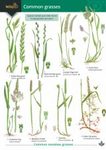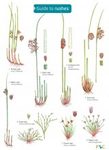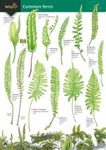About this book
Silviculture of South Asian Priority Bamboos aims at bringing out a comprehensive collection of information on bamboo varieties in South Asia. The main focus of this book is to address the ecological and economic significance of bamboos.
Bamboo is a versatile group of plants, capable of providing ecological, economic and livelihood security to the people. In the tropics, especially the rural areas in different countries of South Asia, most of the houses are made of bamboos. In the hilly areas of Bangladesh, Bhutan, Nepal and India, the tribal people take bamboo shoots as one of their major food items since prehistoric days. With palatable shoots and grass like leaves bamboo plants have also been liked by many herbivore animals, such as, elephants, the wild cattle, Indian Bison, and some species of deer. The red-panda in the Himalayas, and primates, pigs, rats and mice, porcupines, and squirrels are also incidental feeders on southeast Asian bamboos.
There has been a growing awareness in recent years about the values of bamboo being an important means of economic growth and for improving the socio-economic conditions of the rural poor. Bamboo as an industrial material can substitute wood and that to at low cost. Due to increasing demand and squeezing of bamboo area the plants have been overexploited and the quality and quantity of resource alarmingly getting depleted. Besides many new bamboo based industries have come up which also urgently require uninterrupted supply of species wise bamboo resource.
The south Asia region has bestowed with more than 300 bamboo species with enormous diversities at species, ecological and genetical level. A number of bamboo species are found common among countries of the region selected for various utilization potentials having wide range of ability to adjust environmental conditions of these countries and thus prioritized for cultivation. Both government and private planters in the region have started allocating funds, land and other logistics to raise large scale plantation of desired bamboo species.
Silviculture of South Asian Priority Bamboos has been drafted to find out answers of the most pertinent queries based on the field observations on each of the bamboo species and knowledge learnt from the indigenous people living with bamboos in different parts of south-east and south Asian countries.
Silviculture of South Asian Priority Bamboos would be interesting and useful to bamboo professionals, foresters, horticulturists, field level extension workers, nurserymen, planters, industrial entrepreneurs, ecologists, and valuable source of reference to the relevant researchers and students in the region.
Contents
Part I : Introduction
- Introduction to South Asian Bamboos
- Some Priority Bamboo Species For South Asian Region
Part II: Species Silviculture
- Bambusa
- Dendrocalamus Nees
- Gigantochloa
- Melocalamus
- Melocanna Trin
- Ochlandra Thwaites
- Schizostachyum Nees
- Thyrsostachys Gamble
- Ringal bamboos of the Himalayas
- Appendix
- References
- Index
Customer Reviews
Biography
Dr. Ratan Lal Banik is currently retired and worked as Co-Chairperson from International Network for Bamboo & Rattan, New Delhi, India. His field of specialization: a) Bamboo & Rattan silviculture and management, propagation and nursery management, Plantation raising & management, Tissue culture and Improvement, Species Diversity and Germplasm conservation at Bambusetum. b) Homestead & farm forestry, MPTs including medicinal plants, Horticulture and Agroforestry. c) Tree improvement, Seed orchard, Biodiversity and Conservation, Ethnobotany and Community Role





























![Start to Identify Grasses [enlarged edition]](http://mediacdn.nhbs.com/jackets/jackets_resizer_medium/24/249274.jpg?height=150&width=112)











